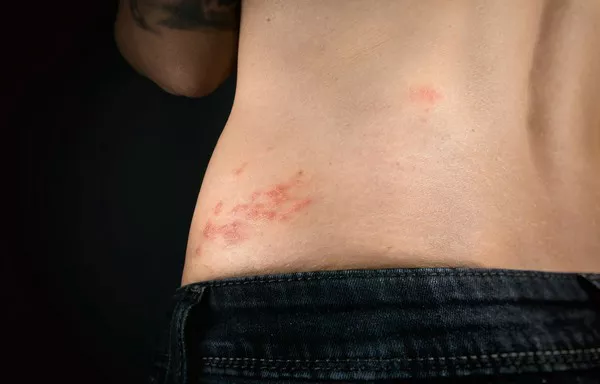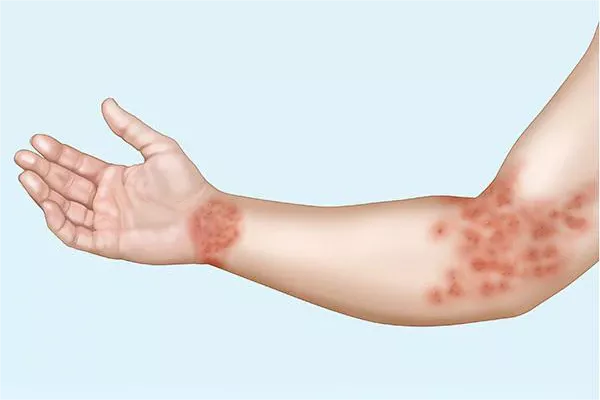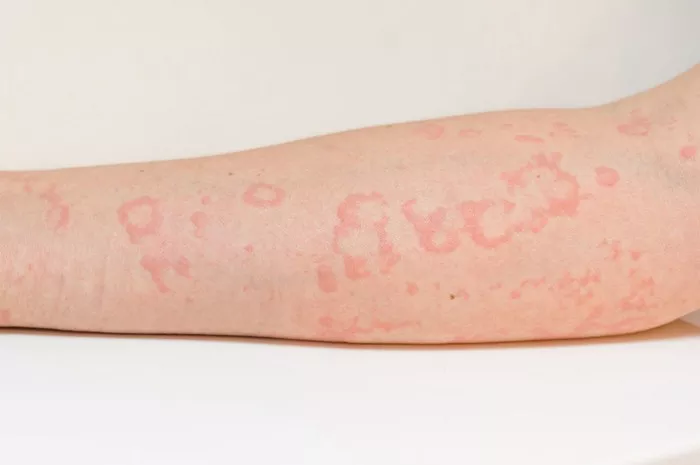Shingles, or herpes zoster, is a viral infection characterized by a painful rash that typically appears in a band, a strip, or a small area on one side of the face or body. This condition results from the reactivation of the varicella-zoster virus (VZV), the same virus that causes chickenpox. Although shingles itself is not directly contagious, the underlying virus can be spread to others, particularly to those who have never had chickenpox or have not been vaccinated against it. In this article, we delve into the nuances of shingles transmission, prevention, and management, providing a comprehensive understanding for healthcare professionals and the general public alike.
The Nature of Shingles and Its Symptoms
Shingles manifests as a painful rash, often accompanied by blisters that scab over in 7 to 10 days and clear up within 2 to 4 weeks. Before the rash develops, people often experience pain, itching, or tingling in the area where the rash will form. This pain can be severe and is frequently the first symptom of shingles. Other symptoms may include fever, headache, chills, and upset stomach.
The rash typically occurs in a single stripe around either the left or the right side of the body or face. In some cases, especially in older adults, the pain can persist for months or even years after the rash has healed, a condition known as postherpetic neuralgia (PHN). This chronic pain can be debilitating and significantly impact the quality of life.
The Varicella-Zoster Virus (VZV)
The varicella-zoster virus belongs to the herpesvirus family and is responsible for both chickenpox and shingles. After a person recovers from chickenpox, the virus remains dormant in the nerve tissue near the spinal cord and brain. Years later, the virus may reactivate as shingles, traveling along nerve pathways to the skin and causing a painful rash.
The reasons for VZV reactivation are not entirely understood, but several factors are known to increase the risk, including:
- Aging: The immune system naturally weakens with age, making older adults more susceptible to shingles.
- Immunosuppression: Conditions that weaken the immune system, such as HIV/AIDS or cancer, and treatments like chemotherapy, radiation therapy, or long-term use of steroids can increase the risk.
- Stress or Trauma: Physical or emotional stress can potentially trigger the reactivation of VZV.
Contagiousness of Shingles
While shingles itself is not spread from person to person, the varicella-zoster virus can be transmitted from a person with active shingles to someone who has never had chickenpox or has not been vaccinated against it. This transmission can occur through direct contact with the fluid from the blisters of the shingles rash. Once infected, the person will develop chickenpox, not shingles. It is important to note that the transmission risk exists only when the rash is in the blister phase. Once the blisters have crusted over, the person is no longer contagious.
Key Points on Transmission:
- Direct Contact: The primary mode of VZV transmission from a shingles patient is through direct contact with the rash blisters.
- Airborne Transmission: Unlike chickenpox, which can spread through respiratory droplets, shingles does not spread through the air. However, in rare cases, the virus can be present in the respiratory secretions of individuals with disseminated herpes zoster (a widespread form of shingles).
- Immunity Status: Individuals who have had chickenpox or have been vaccinated against it are generally not at risk of contracting VZV from someone with shingles.
SEE ALSO: Is the Shingles Virus a Live Virus?
Preventing the Spread of Shingles
Preventing the spread of VZV involves several measures, especially around individuals with shingles:
- Avoid Direct Contact: People with shingles should avoid close contact with individuals who have never had chickenpox or have not been vaccinated, especially pregnant women, newborns, and immunocompromised individuals.
- Covering the Rash: Keeping the shingles rash covered reduces the risk of spreading the virus through direct contact.
- Good Hygiene Practices: Regular hand washing and avoiding scratching or touching the rash help prevent the spread of the virus.
Vaccination
Vaccination plays a crucial role in the prevention of both chickenpox and shingles. There are two vaccines relevant to this discussion:
Chickenpox Vaccine (Varicella Vaccine): This vaccine protects against initial infection with VZV. It is recommended for children, adolescents, and adults who have never had chickenpox.
Shingles Vaccine (Herpes Zoster Vaccine): There are two shingles vaccines available: Zostavax (a live attenuated vaccine) and Shingrix (a recombinant, non-live vaccine). Shingrix is preferred due to its higher efficacy and is recommended for adults aged 50 and older, as well as for immunocompromised individuals aged 19 and older. The shingles vaccine reduces the risk of developing shingles and the severity and duration of PHN if shingles does occur.
Diagnosing and Treating Shingles
Early diagnosis and treatment of shingles are essential to reduce the severity and duration of the illness and to minimize the risk of complications. Diagnosis is typically based on the characteristic appearance of the rash and the associated pain. Laboratory tests, such as polymerase chain reaction (PCR) or direct fluorescent antibody (DFA) tests, can confirm the presence of VZV in some cases.
Treatment Options
Several treatment options are available to manage shingles:
- Antiviral Medications: Antiviral drugs, such as acyclovir, valacyclovir, and famciclovir, can help reduce the severity and duration of shingles if started within 72 hours of rash onset. These medications work by inhibiting the replication of the virus.
- Pain Management: Pain relief is a critical component of shingles treatment. Over-the-counter pain relievers (acetaminophen or ibuprofen), prescription pain medications, topical lidocaine, and even nerve blocks can be used to manage pain.
- Corticosteroids: In some cases, corticosteroids may be prescribed to reduce inflammation and pain, although their use is somewhat controversial due to potential side effects.
- Calamine Lotion and Oatmeal Baths: These can soothe the skin and reduce itching and discomfort associated with the rash.
Complications of Shingles
While shingles can be a painful and debilitating condition, most people recover without significant complications. However, some individuals may experience severe complications, such as:
- Postherpetic Neuralgia (PHN): The most common complication of shingles, PHN is characterized by persistent nerve pain that lasts long after the rash has healed. This condition can be difficult to treat and may require a combination of medications and therapies.
- Vision Loss: Shingles that involve the eye (ophthalmic zoster) can lead to painful eye infections and potential vision loss.
- Neurological Problems: Depending on which nerves are affected, shingles can cause encephalitis (inflammation of the brain), hearing problems, or balance issues.
- Skin Infections: Secondary bacterial infections of the shingles rash can occur, requiring antibiotic treatment.
SEE ALSO: What Foods to Avoid with Shingles
Living with Shingles: Management and Support
Living with shingles can be challenging, especially for those dealing with PHN or other complications. Here are some strategies for managing life with shingles and minimizing its impact:
- Adherence to Treatment: Following prescribed antiviral and pain medications can significantly improve outcomes.
- Healthy Lifestyle: Maintaining a healthy lifestyle, including a balanced diet, regular exercise, and adequate sleep, can support the immune system.
- Support Groups: Connecting with others who have experienced shingles through support groups or online communities can provide emotional support and practical advice.
- Stress Management: Techniques such as meditation, yoga, and mindfulness can help manage the stress that might exacerbate symptoms or trigger VZV reactivation.
Conclusion
Understanding the contagious nature of shingles and implementing preventive measures are crucial steps in managing this condition. While shingles itself is not directly contagious, the varicella-zoster virus can be spread to susceptible individuals, causing chickenpox. Vaccination remains the most effective method to prevent both chickenpox and shingles, reducing the incidence and severity of the disease.
Early diagnosis and prompt treatment can mitigate the impact of shingles and reduce the risk of complications such as postherpetic neuralgia. For those living with shingles, a combination of medical treatment, lifestyle adjustments, and support can enhance the quality of life and aid in recovery. By spreading awareness and knowledge about shingles, we can better protect vulnerable populations and improve outcomes for those affected by this painful condition.
Related Topics:



























